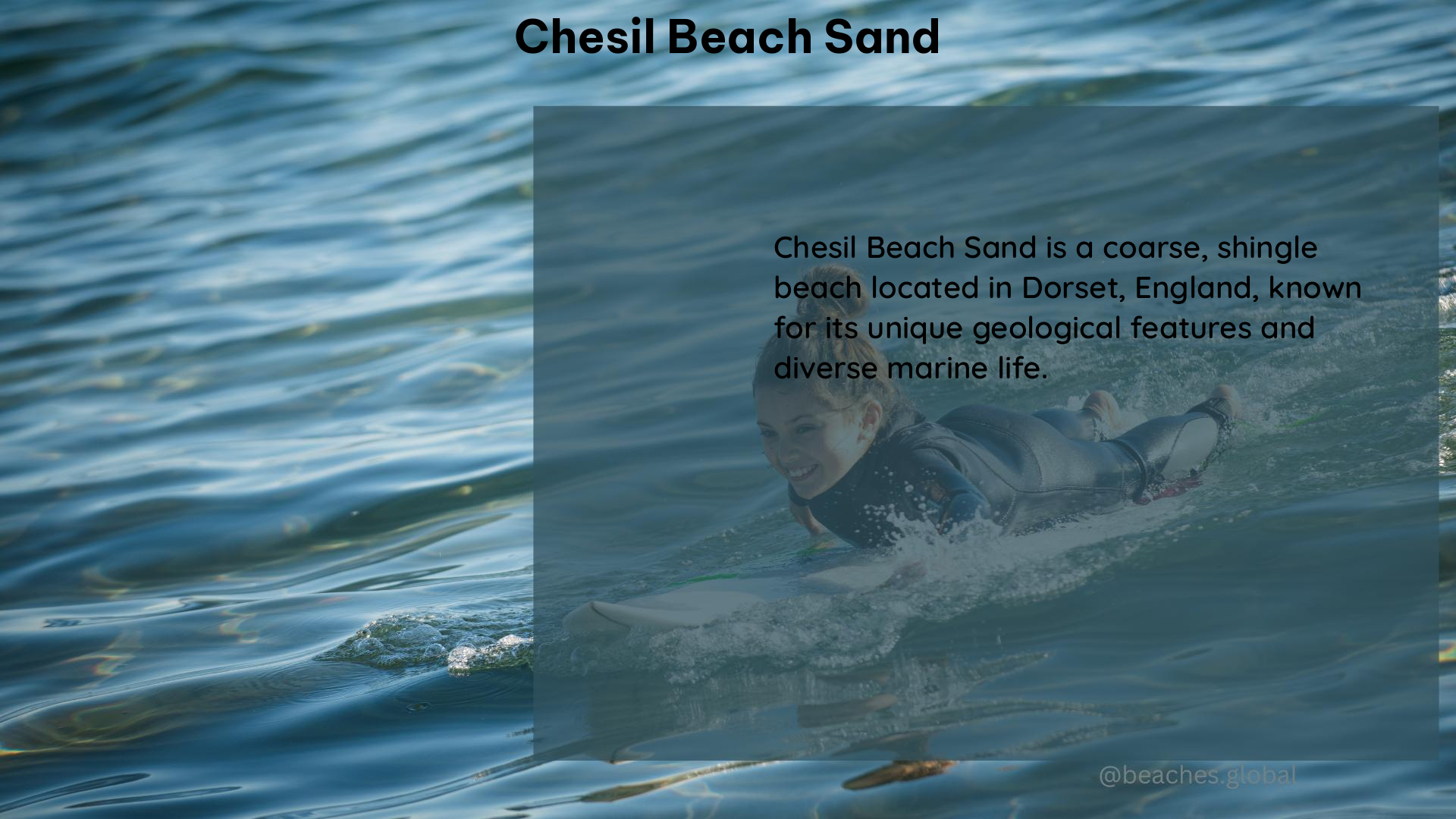Chesil Beach, located on the southern coast of England in the county of Dorset, is a remarkable natural wonder known for its unique and fascinating sand composition. As a Beaches Touring Enthusiast, you’ll be captivated by the intricate details and the geological history that have shaped this iconic landmark.
The Composition of Chesil Beach Sand
Chesil Beach is not your typical sandy beach. Instead, it is composed of a vast collection of pebbles and shingle, with an estimated 180 billion individual pieces. These pebbles range in size from small, smooth stones to larger, more angular rocks, creating a unique and diverse landscape.
The sand at Chesil Beach is not made up of the fine, granular material that is commonly found on other beaches. Instead, it is a mixture of coarse, rounded pebbles and shingle that have been shaped and smoothed by the relentless action of the waves and tides over thousands of years.
The Formation of Chesil Beach

The formation of Chesil Beach is a fascinating story that dates back to the end of the last ice age, around 20,000-14,000 years ago. As water levels rose rapidly, the predominantly sandy deposits in Lyme Bay were eroded and the sand and gravel were driven onshore, creating the barrier beach that we see today.
Over time, the barrier beach was driven further east by rising sea levels, overriding existing sediments and forming the Fleet, a shallow tidal lagoon that runs behind the beach. This process was virtually complete by around 5,000 years ago, creating the unique landscape that we see today.
The Geological Significance of Chesil Beach
Chesil Beach is not just a beautiful natural landmark; it is also of great geological significance. The beach and the Fleet Lagoon behind it are part of the Jurassic Coast, a UNESCO World Heritage Site that showcases 185 million years of Earth’s history.
The pebbles and shingle that make up Chesil Beach are a testament to the region’s geological history, with each piece of rock representing a different era and a different type of sedimentary or igneous rock. By studying the composition and distribution of these pebbles, scientists can gain valuable insights into the region’s past and the processes that have shaped it over time.
The Ecological Importance of Chesil Beach
In addition to its geological significance, Chesil Beach is also an important ecological habitat. The beach and the Fleet Lagoon behind it are designated as a Site of Special Scientific Interest (SSSI) and a Ramsar Site, recognizing their importance as a wetland of international significance.
The beach and the lagoon provide a home for a wide variety of plant and animal species, including rare and endangered species such as the Chesil Beach Beetle and the Marsh Harrier. The area is also an important stopover point for migratory birds, making it a popular destination for birdwatchers and nature enthusiasts.
Accessibility and Amenities
Chesil Beach is a popular destination for visitors, and it is relatively easy to access. The beach stretches for 18 miles, from West Bay to Portland, and there are several car parks and access points along the way. Visitors can also explore the beach and the Fleet Lagoon on foot or by bike, with a number of footpaths and bridleways providing access to the area.
In terms of amenities, there are a few options available. The Chesil Beach Centre, located in Portland, offers exhibits, displays, and educational programs about the beach and the surrounding area. There are also a few cafes and restaurants in the nearby towns and villages, providing visitors with opportunities to refuel and enjoy the local cuisine.
Conclusion
Chesil Beach is a truly unique and fascinating natural landmark that offers something for everyone. Whether you’re interested in geology, ecology, or simply enjoying a beautiful beach, this iconic stretch of coastline is definitely worth a visit. So why not plan your next Beaches Touring adventure and explore the wonders of Chesil Beach?
References:
– Wikipedia – Chesil Beach
– Chesil Beach Formation
– Visit Dorset – Chesil Beach
– Discovering Britain – Chesil Beach
– Chesil Beach Official Website
